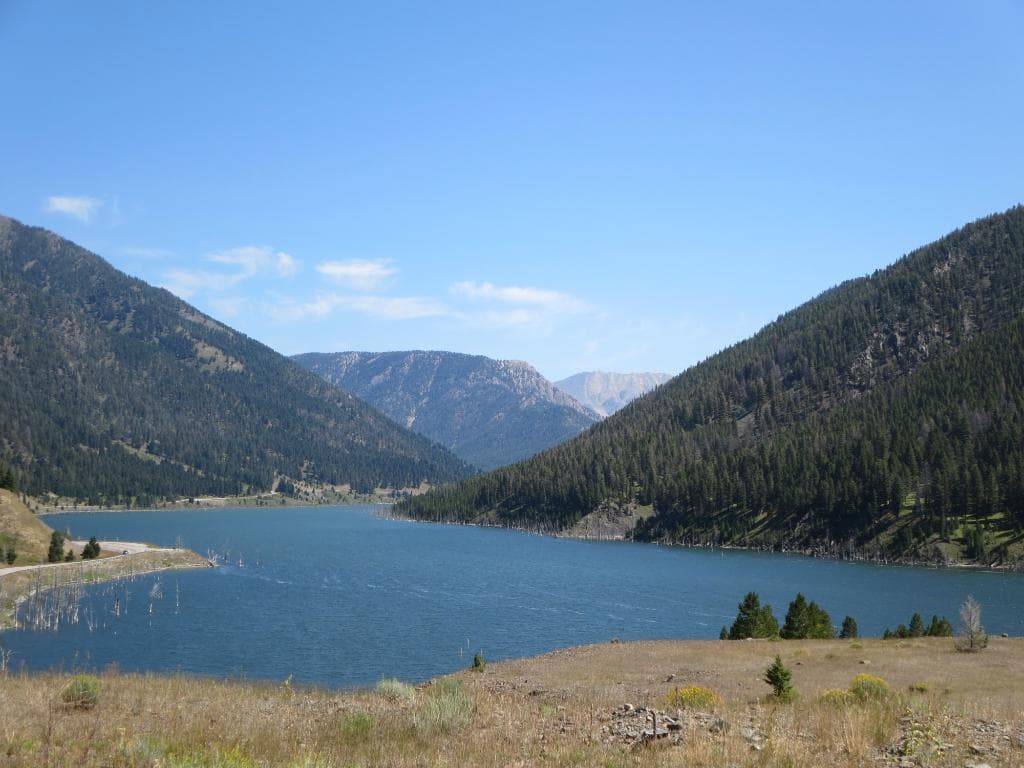
Earthquake Lake Montana
A stunning lake formed by a 1959 earthquake, featuring eerie 'ghost trees' and a dramatic landslide scarp.
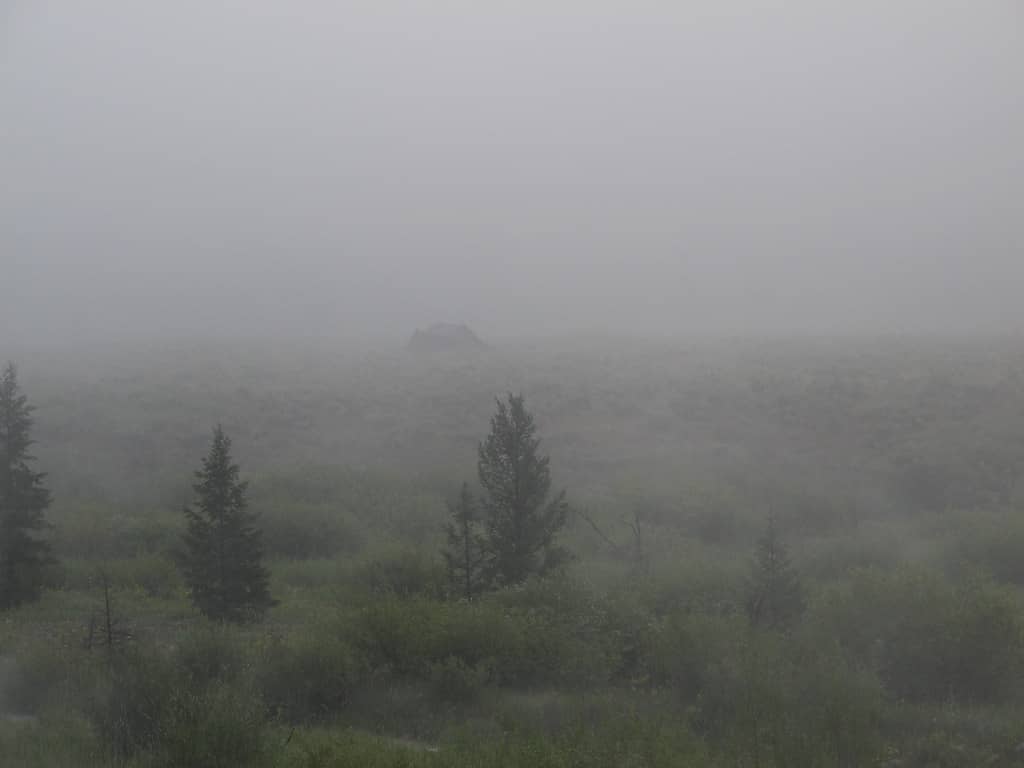
Highlights
Must-see attractions

Social
From TikTok & Reddit
Best Time
Serene views, fewer crowds

Earthquake Lake Montana
Best Time
Serene views, fewer crowds

Highlights
Must-see attractions
A stunning lake formed by a 1959 earthquake, featuring eerie 'ghost trees' and a dramatic landslide scarp.
"A picturesque yet poignant reminder of nature's raw power, this lake is a must-see."
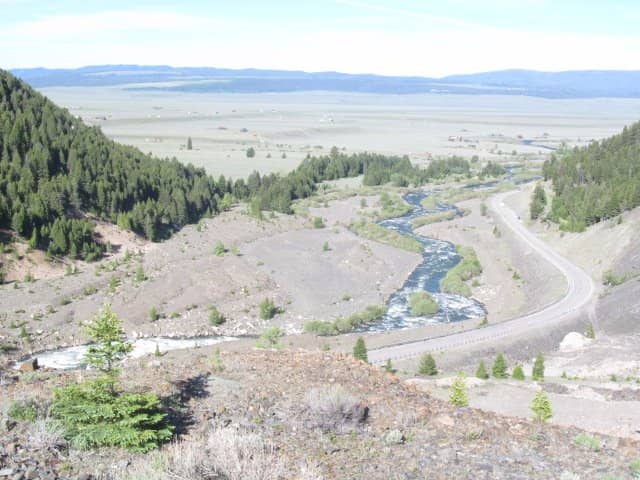
Visit the Visitor Center First
Gain crucial context about the 1959 earthquake and landslide before exploring. :informationdeskperson:
Capture the 'Ghost Trees'
These submerged tree trunks are a unique and haunting photographic subject. :camerawithflash:
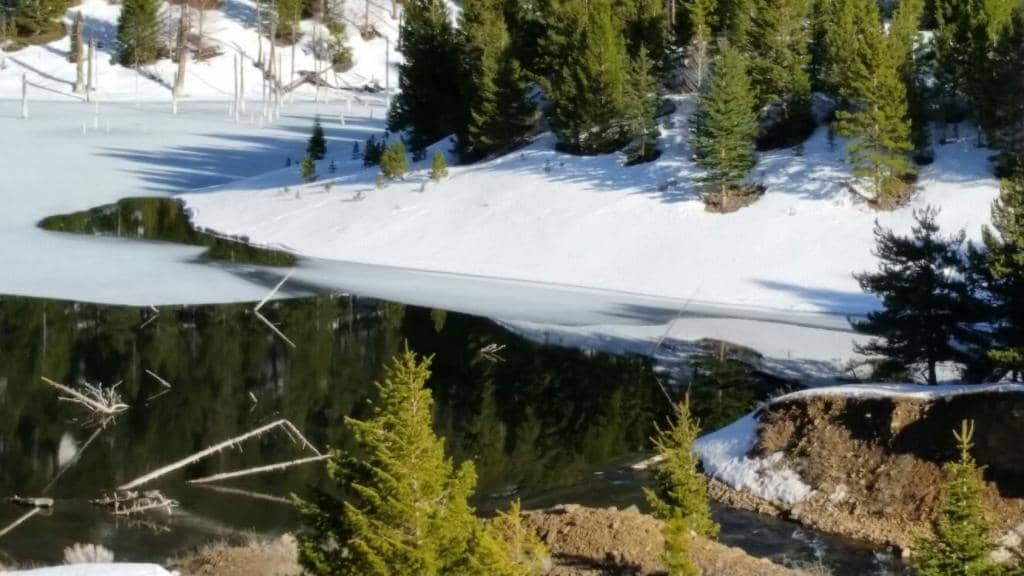
Highlights
Discover the most iconic attractions and experiences

Ghost Trees
Emerging from the lake's waters
Eerie, skeletal tree trunks rise from the water, a haunting reminder of the submerged forest.
Landslide Scarp
Towering over the lake
A dramatic, sheer cliff face showcasing the immense power of the 1959 earthquake and landslide.
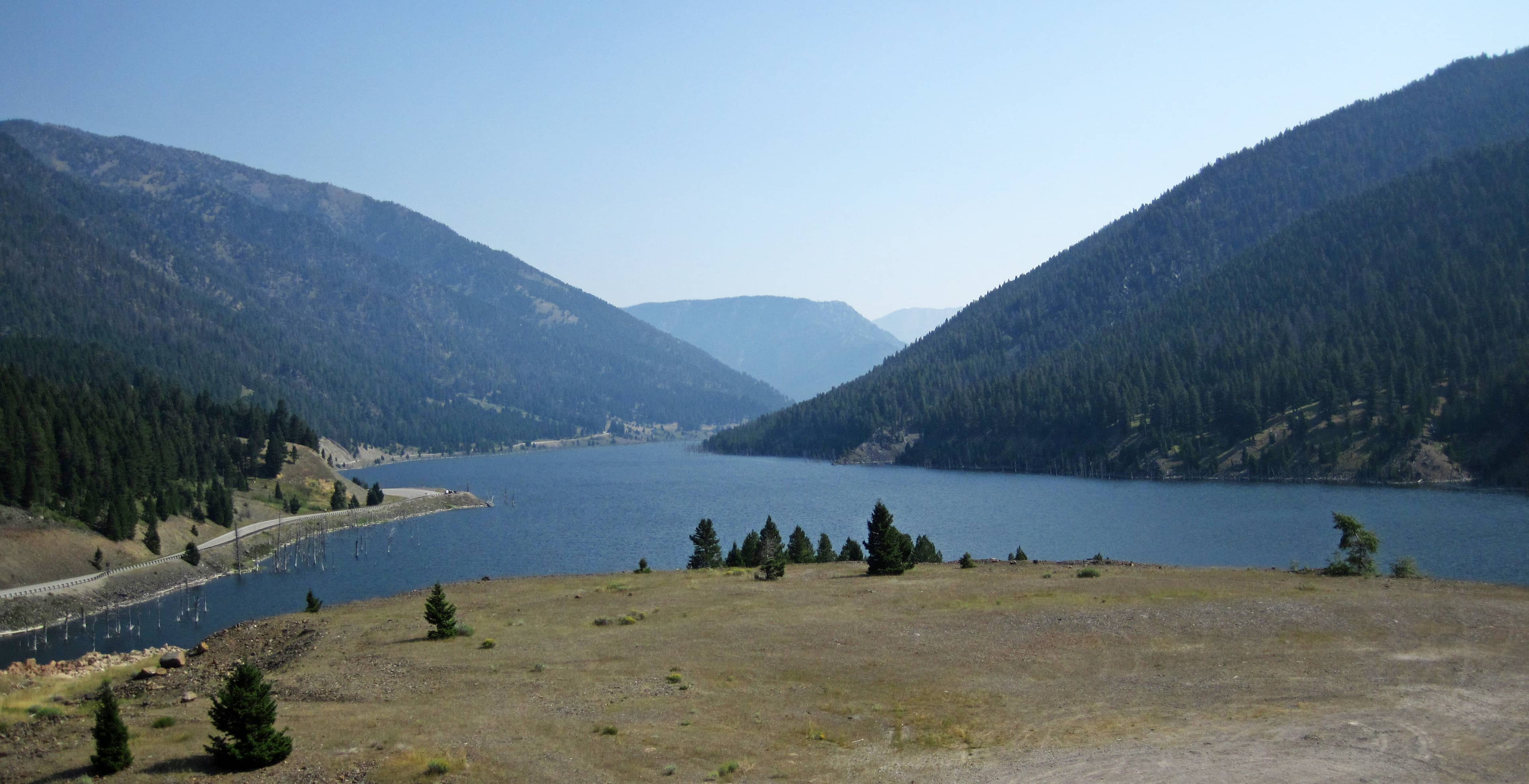
Earthquake Lake Visitor Center
Overlooking the lake
Learn about the 1959 earthquake, view exhibits, and see a memorial to those lost.
Plans like a pro.
Thinks like you
Planning Your Visit
Embrace the Dramatic Landscape
Plan Your Visit Around the Visitor Center
Best Times
Insider Tips
from TikTok, Instagram & Reddit
Quake Lake with the ghosts of yesterday still rising from the depths
Visit the Visitor Center First
Gain crucial context about the 1959 earthquake and landslide before exploring. :informationdeskperson:
Capture the 'Ghost Trees'
These submerged tree trunks are a unique and haunting photographic subject. :camerawithflash:
Trigger warning, another itinerary question post. 2 full days and one late afternoon.
A few recommendations before upcoming trip
Drive the Scenic Highway
Highway 287 offers stunning mountain views on your way to and from the lake. :road:
Respect the Memorial
Remember the tragedy; the visitor center has a memorial for the 28 lives lost. :pray:
I’m living in a van and gonna be doing Yellowstone in a couple weeks. I’d like some advice on what parts of the park to hit when. All the blips are things I’m wanting to see and do. More in comments
Tips
from all over the internet
Visit the Visitor Center First
Gain crucial context about the 1959 earthquake and landslide before exploring. :informationdeskperson:
Capture the 'Ghost Trees'
These submerged tree trunks are a unique and haunting photographic subject. :camerawithflash:
Drive the Scenic Highway
Highway 287 offers stunning mountain views on your way to and from the lake. :road:
Respect the Memorial
Remember the tragedy; the visitor center has a memorial for the 28 lives lost. :pray:
What Travellers Say
Reviews Summary
Visitors are captivated by the stunning, dramatic scenery of Earthquake Lake, a place born from a powerful natural event. The unique 'ghost trees' and the imposing landslide scarp are highlights, offering a poignant reminder of nature's force. While the beauty is undeniable, the lake's origin adds a layer of awe and reflection to the experience.
"Now, don't get me wrong, Earthquake Lake is gorgeous. Those towering cliffs, the crystal-clear water... breathtaking! But let's be real, the name kinda throws you off. I mean, you're paddling along, enjoying the serenity, and then you remember, 'Oh yeah, this place got shaken to its core at some point.' Makes you wonder if that serene cliff face might decide to have a little temper tantrum while you're picnicking. Still, gotta admire nature's sense of humor – 'Here's a paradise, but just to keep things interesting, we'll add a touch of seismic drama!'"
Vagabond Couple
"A Natural Marvel Born of Tragedy. Earthquake Lake, locally known as Quake Lake, is a picturesque yet poignant reminder of nature's raw power, located in the Madison Canyon of southwestern Montana, about 27 miles northwest of West Yellowstone. This stunning body of water was formed in the wake of a devastating earthquake on August 17, 1959. Today, it stands as both a natural wonder and a memorial to the lives lost in the disaster.
Formation and Historical Significance:
Earthquake Lake was created when a massive 7.5 magnitude earthquake caused an enormous landslide, damming the Madison River and resulting in the creation of the lake. The landslide carried 80 million tons of rock and debris, burying a campground and blocking the river's flow, causing the water to rise rapidly and form the lake. Tragically, 28 people lost their lives in the earthquake and subsequent landslide, and the event dramatically altered the landscape.
Geological and Hydrological Features:
Size and Depth: Earthquake Lake stretches approximately 6 miles in length and covers an area of about 1,200 acres. It reaches depths of up to 190 feet.
Landslide Scarp: The sheer cliff left behind by the landslide is a striking geological feature, illustrating the sheer force of the event. The scarp towers over the lake, providing a dramatic backdrop and a visual reminder of the earthquake’s impact.
"Ghost Trees": One of the lake’s most haunting and distinctive features is the stand of dead trees that emerge from its waters. These "ghost trees" were submerged when the valley flooded and now serve as stark, skeletal reminders of the forest that once thrived in the canyon.
Ecological and Recreational Aspects:
Wildlife Habitat: Earthquake Lake and its surrounding area support a diverse range of wildlife, including deer, elk, moose, and various bird species. The lake’s ecosystem is rich with aquatic life, making it a popular spot for fishing, particularly for species like trout.
Recreation: Visitors to Earthquake Lake can engage in various recreational activities such as boating, fishing, and hiking. The area offers stunning views, and the unique landscape provides ample opportunities for photography and nature observation.
Visitor Center: The Earthquake Lake Visitor Center, operated by the U.S. Forest Service, offers educational exhibits and detailed accounts of the earthquake and its aftermath. It features displays of geological phenomena, survivor stories, and a viewing area overlooking the lake and landslide area. The center provides valuable insights into the natural history and ongoing geological processes of the region.
Accessibility and Surroundings:
Scenic Byway: Earthquake Lake is accessible via the scenic Highway 287, which runs through the Madison River Valley. The drive offers breathtaking views of the surrounding mountains and valleys, making it a popular route for travelers exploring southwestern Montana.
Nearby Attractions: The lake is located near Yellowstone National Park, offering visitors additional opportunities to explore one of the nation’s most iconic natural landscapes. The area around Earthquake Lake is also known for its abundant outdoor activities, including hiking, camping, and wildlife viewing.
Memorial and Legacy:
Quake Lake Memorial: At the Visitor Center and surrounding areas, memorial plaques and markers commemorate the lives lost during the earthquake. These memorials provide a place for reflection and remembrance, honoring those affected by the natural disaster.
Educational Value: Earthquake Lake serves as a significant educational site, providing insights into earthquake dynamics, landslide geology, and the resilience of nature. It attracts geologists, students, and nature enthusiasts interested in studying the effects of natural disasters on the environment."
Chirag Warty
"YES, this place is worth visiting, both in summer and in winter! If you are traveling to Yellowstone National Park, make the effort to go a bit out of your way to Earthquake Lake! It takes a little while to drive to, but it is a very unique place!
Earthquake Lake was formed not too long ago by one of the most powerful earthquakes in recent Yellowstone history. A landslide occurred, blocking off a river, and the area began to flood. Many people camping by the river died from this event unfortunately, and yet the lake is still here, decades later.
Earthquake Lake is so unusual as it still has many of the trunks from trees poking out of the water. These trees used to be on dry land alongside the river, but when it flooded, they died, and just the trunks remain. Also be sure to head up through the pass to see toward Idaho - if you’re there at sunset, it amounts for some beautiful photos.
There is a visitor center, gift shop, ample parking, some hiking trails, and various turnouts along the road so you can get some pictures of the lake. It’s worth visiting - I really like it here!"
Michael
What People Like
What People Dislike
Frequently Asked Questions
🚇 🗺️ Getting There
Earthquake Lake is accessible via the scenic Highway 287 in southwestern Montana, about 27 miles northwest of West Yellowstone. The drive itself offers beautiful mountain vistas.
Yes, Earthquake Lake is located relatively close to Yellowstone National Park, making it a worthwhile detour for visitors exploring the park.
Most visitors access Earthquake Lake via Highway 287. The drive is scenic and well-maintained, offering glimpses of the Madison River Valley.
The drive along Highway 287 is the primary route. If coming from the west, you'll pass through areas like Ennis, Montana.
Public transportation options are very limited in this remote area. Driving your own vehicle or a rental car is the most practical way to reach Earthquake Lake.
🎫 🎫 Tickets & Entry
There are no entrance fees or tickets required to visit Earthquake Lake itself. Access to the lake and its surrounding areas is generally free.
Earthquake Lake is an outdoor natural attraction and is accessible year-round. However, the Earthquake Lake Visitor Center has seasonal operating hours, typically open during the summer months. It's best to check their schedule in advance.
The Earthquake Lake Visitor Center is usually free to enter, offering educational exhibits and information about the 1959 earthquake.
Yes, Earthquake Lake can be visited in winter, but access may be limited due to snow. The visitor center will likely be closed. Be prepared for winter driving conditions.
While lake access is free, you may need a Montana fishing license if you plan to fish. Boating regulations should also be checked with local authorities.
🎫 🏞️ Onsite Experience
The main attractions include the unique 'ghost trees' rising from the water, the dramatic landslide scarp, and the informative Earthquake Lake Visitor Center.
Visitors can enjoy boating, fishing, hiking on nearby trails, photography, and learning about the area's geology at the visitor center.
Yes, there are hiking trails in the vicinity of Earthquake Lake, offering opportunities to explore the surrounding landscape and get different perspectives of the lake and landslide area.
The 'ghost trees' are visible from various points along the lake's shore and from the water itself if you are boating. The visitor center also provides good vantage points.
While the lake is beautiful, swimming is not a primary activity due to its depth and cold water temperatures. Boating and fishing are more common.
📸 📸 Photography
The 'ghost trees' are iconic. Also, capture the dramatic landslide scarp, the reflections on the water, and the surrounding mountain scenery. Sunset can offer beautiful light.
Early morning and late afternoon offer the best light for photography, with softer shadows and warmer tones. Golden hour at sunset can be particularly stunning.
Yes, there are numerous turnouts and viewpoints along Highway 287 that provide excellent photo opportunities of the lake and its features.
A wide-angle lens is great for capturing the expansive landscape. A telephoto lens can be useful for details of the scarp or wildlife. Don't forget a polarizing filter for water shots. :camerawithflash:
Drone usage regulations can vary. It's essential to check with the U.S. Forest Service or local authorities regarding any restrictions on drone operation in the area.
For Different Travelers
Tailored advice for your travel style
👨👩👧 Families with Kids
Keep an eye out for wildlife like deer or birds, which can add to the adventure. While extensive hiking might be challenging for very young children, shorter walks from the turnouts offer manageable exploration. Emphasize the story of the earthquake and the resilience of nature to make the visit both fun and informative.
📸 Photographers
Utilize the numerous turnouts along Highway 287 for diverse perspectives. A wide-angle lens is ideal for capturing the vastness of the lake and surrounding mountains, while a telephoto lens can isolate details of the scarp or any wildlife. Consider a polarizing filter to enhance the colors of the water and sky. The visitor center itself offers a good vantage point for overview shots.
Deep Dives
In-depth insights and expert knowledge
The 1959 Earthquake and Landslide
The sheer scale of the landslide is still evident today in the dramatic, towering landslide scarp that forms a striking backdrop to the lake. This geological scar serves as a powerful visual reminder of the immense forces unleashed during the earthquake. The creation of the lake dramatically altered the landscape, submerging forests and changing the course of the river. The Earthquake Lake Visitor Center provides detailed exhibits and survivor accounts, offering a poignant and educational experience for visitors seeking to understand the event's impact.
Visiting Earthquake Lake is not just about admiring a beautiful body of water; it's about connecting with a significant geological event and its human story. The 'ghost trees'—the skeletal remains of trees submerged by the rising waters—are a particularly haunting and iconic feature, standing as stark sentinels in the lake. These elements combine to make Earthquake Lake a place of both natural beauty and profound historical significance.
Recreation and Exploration
For those who prefer to explore on foot, there are hiking trails in the surrounding Madison Canyon area. These trails allow visitors to immerse themselves in the natural beauty of the region and gain different perspectives of the lake and the impressive landslide features. The Earthquake Lake Visitor Center is a must-visit for anyone interested in the area's natural history and the story of the 1959 earthquake. It features informative displays, a memorial, and often provides insights into local wildlife and geology.
When planning your visit, consider the time of day for the best experience. Early mornings and late afternoons often provide the most dramatic light for photography and a more tranquil atmosphere. Remember to check the operating hours for the visitor center, as it is typically seasonal.




Social
from TikTok, Instagram & Reddit